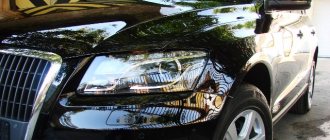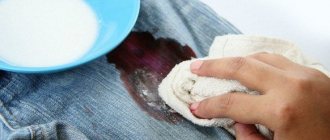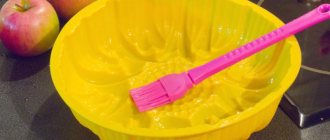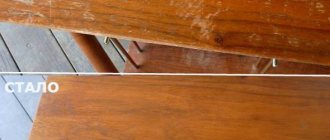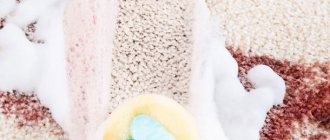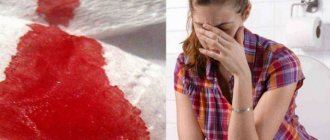A car reflects the essence of its owner. That's why it's so important to keep it clean and tidy. And in order to know how to remove various stains from a car body, it is important to follow the effective recommendations of experienced motorists.
Removing stains from a car body
During operation, the vehicle is exposed to various environmental factors: a bird has perched, leaves have stuck, marks remain after the sticker, the body is stained with resin, or stains from the asphalt surface appear. The list can be continued indefinitely, but this is not the main thing. The first thing a car enthusiast needs to know is what products to use to remove these stains on the car.
Unusual but working lifehacks that will help clean your car.
For many of us, the process of washing a car is something special and even sacred. Some people prefer to pay money by washing their car at a car wash. Some people like to do it themselves, not trusting their car to other people. But no matter who washes your car, many car enthusiasts are always interested in various tips and life hacks for car washing, many of which can really make the process of cleaning your car from dirt easier.
There is a huge amount of similar advice. Today we present to you the most unusual and strange life hacks that, surprisingly, really work.
Use Coca-Cola to clean your windshield
When it rains after a long dry spell, a dirty windshield becomes one big mess due to the dirt being partially baked into the surface of the glass.
As a result, neither rain nor windshield wipers help clean the surface. As a rule, the windshield in this case will look like dirt spots. If such spots begin to bother you right on the road, there is a temporary solution to this problem. See also: 37 Unusual Ways to Use Coca-Cola
Take an old towel, a large rag, and place it at the bottom of the windshield to protect the paint on your car's hood. Next, take Coca-Cola and pour it on the windshield. Gas bubbles will quickly erase dirt on the glass. However, keep in mind that after such treatment the glass will become sticky, which will attract new dirt.
Therefore, after treating with Coca-Cola, it is necessary to rinse the glass with water. Despite some inconveniences associated with using a sugary drink, this hack works great as a temporary solution to poor visibility due to dirt stuck to the windshield.
Lime. White spots that can't be washed off
Ceilings in parking lots are usually whitened with lime. It protects floors from fungi and mold. But when water flows from above through the ceilings onto the cars, lime flows along with it. And she is famous for her causticity. Whitish spots usually appear after the stains have dried. If the lime is removed immediately, it will not have time to cause significant harm. But there are cars that don’t leave the parking lot for weeks. And if lime is spilled on such a vehicle, serious risks arise. On cars with hard varnish, lime leaves stains that can be removed by polishing. On cars with thin soft varnish, complete destruction or peeling of the varnish layer may occur. In this case, defects are removed by painting.
Lime stains should not be rubbed as they contain abrasive particles. But they can be dissolved using a liquid descaler or household limescale cleaner. They are applied using a sprayer. But they must be used extremely carefully so as not to dissolve the varnish along with the lime.
Myth. You can remove lime stains yourself with a solution of citric acid or vinegar.
Is it true. It’s better not to take risks, because trying to remove stains on your own complicates the work of specialists who will ultimately have to bring this matter to a happy ending. Yes, acidic compounds are used to remove lime, but these are special substances that need to be used skillfully and competently. In addition, very often, after removing the lime, whitish spots still remain on the varnish, but this is no longer dirt, but matted areas with damaged varnish. They need to be polished. In cases of catastrophic bad luck, lime damage has to be painted over.
If there are lime stains on your car and you don’t have anything at hand to wash it off, use regular lemon juice or vinegar. Using a spray bottle will speed up the process.
Vodka as a windshield washer fluid
This is probably the most famous method of alternative to winter antifreeze, which came to us since the times of the USSR, where motorists did not know what a branded antifreeze was.
See also Do- it-yourself anti-freeze
Probably, lovers of strong drinks will not approve of this method, like the Goonie in the film “Operation “Y” and other adventures of Shurik” (break half a liter!).
However, if you do not have the opportunity to pour normal factory anti-freeze into the windshield washer reservoir, vodka can be irreplaceable. However, please note that we would not recommend using vodka in its pure form. It’s better to use vodka to make not only an anti-freeze agent, but also a full-fledged windshield washer fluid. Here is the mixture you can prepare:
Fill a plastic screw cap bottle with 3 cups of vodka (the cheapest you can find), 4 cups of water, and add 2 teaspoons of liquid dishwashing detergent.
Screw the cap onto the bottle and shake it well, then pour as much liquid as needed into the windshield washer reservoir.
Afterword
The modern chemical industry produces cleaners for almost all types of contaminants. It is important to choose them thoughtfully and apply them wisely. If a product from one manufacturer does not work, this does not mean that an analogue from another brand will be just as useless. And price is not always an indicator of effectiveness. Sometimes cheap auto chemicals work better than expensive ones. If one cleaner doesn't work, you need to try another.
This car is treated with iShield ceramic protection. The coating forms a layer with a hardness rating of 9H+. It protects against foreign paints and is not afraid of droppings and insects.
But if you are not inclined to risky experiments, then it would be better to immediately turn to detailing specialists. They will apply a hard protective coating to the paintwork - ceramics or liquid glass. A durable protective layer will absorb all negative influences, be it bitumen, paint from markings, poplar resin, crushed insects or bird droppings. This protection does not always save you from stones flying at high speed, but surviving service in a beast washer without consequences will easily help.
Make your car headlights shine
We all know that headlights in a car play one of the most important roles in vehicle safety. Accordingly, every driver is obliged to keep lighting sources clean. Poor visibility on the road due to dirty headlights is a risk of getting into an accident. That's why it's so important to clean your headlights of dirt before you hit the road.
Unfortunately, over time, the headlights begin to dim (become cloudy). To prevent this from happening, regularly clean your headlights with more than just a regular rag and water. To keep your headlights as clear and shiny as possible, use window cleaner (available at any hardware store or supermarket). Old women's tights are perfect as a polishing material; they will 100% not leave streaks or scratches on the headlight glasses.
Metal dust. Rust that washes off
Owners of light-colored cars may experience a slight shock when they discover traces of rust appearing on the exterior of the paintwork. Is it really time to sell the car?! Before you panic, try washing off the rust. Often the appearance of “spiders” is caused by pieces of metal soldered into the paintwork. This is usually metal chips that fly from the brake pads. It is hot and, when it gets on the varnish, it instantly sticks to the surface. Then, under the influence of moisture, the metal dust oxidizes, and rust spots appear on the paintwork.
This is the very case when you need to use only special tools. Both Liqui Moly and KochChemie have good cleaners for removing block dust.
Myth. Metal chips from the pads are harmless. It can be washed with ordinary detergents at the cottage or at a self-service car wash.
Is it true. The dangers of metal dust should not be downplayed. It is soldered into the varnish and leaves microcraters on it. It cannot be scrubbed, as metal particles will scratch the varnish. Places where metal dust is localized should be treated with a special agent that will dissolve the metal. The ideal way to solve the problem is to wash the car at a detailer from time to time, so that specialists wash not only the body, but also the wheel rims, which are covered with metal coating from the pads, with a special composition. If this is not done, the discs will quickly lose their appearance - they will look old and rusty.
Use feminine pads to clean your windshield
What could be worse when your car suddenly runs out of windshield washer fluid while driving in bad weather? Or, for example, when driving on the highway, the pump in the washer reservoir failed or the reservoir itself began to leak. In this case, you will have to constantly stop and clean the windshield manually. If you have feminine sanitary pads with you, the process of manually cleaning your windshield will become much easier.
See also: 19 Ways to Use Super Glue You've Never Tried (But Should!)
If not, we recommend throwing a pack of gaskets in the trunk. Who knows, maybe someday it will come in handy for cleaning glass. Especially if you plan to travel far. The gaskets will not only absorb dirt and water well, but will also help remove stains from the glass.
Tree resin.
Flowering trees, especially such as poplar, linden, birch, and their active release of resins necessarily affect the appearance of the car - they leave sticky yellow stains that are difficult to remove. Even if the nearest tree is located half a kilometer away from your usual routes, and even if it is a palm tree in a tub in your office, there is no guarantee that one morning you will not think about how to clean linden resin from the body of your car. Well, or how to remove traces of poplar buds from the snow-white hood.
There are quite a lot of means for cleaning the car body from tree resin. In addition to the mentioned VD-ashki, you can use, for example, Decabit (Atas). It is better to clean the white body with a suitable type of Profoam, the main thing is not to delay it, and follow the instructions. If auto body chemicals are not sold within a certain number of kilometers, we return to folk remedies. The same white spirit, diluted alcohol or vodka will do. If your soul hurts at the last words, find margarine or sunflower oil - soak, rub and that’s it. Although no, not all - you will still have to remove greasy stains from such a “cleaner”, but this is a task that can be done with a large amount of water and standard car shampoo.
You should not use pure alcohol or solvent to enhance the effect - in addition to organic resin stains, the varnish will be damaged and matte stains are guaranteed.
Clean the windshield wiper blades
Unfortunately, even new windshield wiper blades may not clean the glass as effectively as you would like from time to time. The fact is that the blades can become dirty, causing them to stain the windshield. This is why it is so important to keep them clean. For example, this can be done using a self-prepared liquid. To do this, prepare a solution of 1/4 cup of ammonia and 1 liter of water.
See also: This is what the windshield wiper system on a car consists of
Then carefully lift the windshield wiper blades and wipe the resulting fluid onto both sides of the wiper blades. This can be done with a soft cloth or paper towel soaked in the solution. Then wipe the brush blades with a dry cloth before lowering them into place.
Corrosion formation
Metal corrosion , or simply rust, appears as a result of metal oxidation under the influence of the environment. The main reason for its appearance is damage to the paint on the car body.
All resulting scratches and chips sooner or later become a source of rust formation, which gradually spreads deeper into the stain and over the entire larger surface area of the body.
The rate at which corrosion spreads depends on the aggressiveness of the environment and the condition of the body itself. For example, in the winter season it spreads many times faster.
It is much easier to deal with a single rust stain that has just appeared than with multiple “saffron caps” or an old stain where the metal is corroded almost completely.
The appearance of corrosion that is not yet visible to the eye is indicated by swelling of the paintwork. Such areas should be immediately cleared of old paint and cleaned.
Types of body corrosion
Among the most common types of body corrosion are:
- Chemical. The main catalyst is the surrounding part. The metal product gradually begins to oxidize. The biggest danger is contact with moisture. After all, it may contain various substances and additives. Even air is chemically dangerous for metal, especially in places with a very poor environment.
- Mechanical. Caused by the impact of significant mechanical load on the body. This process especially often manifests itself along with electrochemical corrosion, in places of mutual contact and connection of materials.
- Electrochemical. The likelihood of such body corrosion developing is especially high during the cold season. This is due to the fact that there is a lot of salt, sand and other reagents on the road. In contact with steel, they create a cathode-anode connection. As a result, the metal surface quickly deteriorates.
Vulnerable places
The areas that experience the greatest mechanical stress are the most susceptible to corrosion. These include:
- thresholds are among the first to suffer from corrosion;
- hood – small pebbles from the vehicle in front provoke the appearance of numerous chips;
- wheel arches are constantly exposed to aggressive chemicals.
It is important to promptly detect emerging rust and eliminate it, preventing the further spread of corrosion. To do this, you need to know how you can deal with this unpleasant phenomenon yourself.
Improve your visibility while driving
Another tip for keeping your car windows clean and clear. To do this, prepare the same liquid that we advised to use for cleaning windshield wiper blades. Add 1/4 cup household ammonia to 1 liter of water in a plastic bottle with a waterproof cap and keep it in your car to clean windshields and windows.
As soon as your windshield or side windows start to get dirty, pour the solution onto a sponge and then apply the liquid to the windows. Then dry the glass with a soft cloth or paper towel.
Baking soda is an excellent car cleaner.
Add 1/4 cup baking soda to a 5-quart plastic canister, then add 1/4 cup dishwashing liquid to the canister. Next, fill the canister with water almost to the top. Screw the cap onto the canister and shake well.
See also: How to properly use anti-rain on car windows?
Store the prepared cleaner concentrate for later use. When it's time to wash the car, shake the canister well again and pour a glass of concentrate, mixing it with 8-10 liters of water. Fill a bucket with warm water and mix in a homemade cleaning solution that you can use to wash your car.
Corrosion Removal Methods
Corrosion can be eliminated in the following ways:
- Mechanical – used for severe corrosion, it involves removing rust by stripping down to metal, followed by priming, puttying and painting the area of the body being repaired;
Advantages of the method: elimination of large and deep stains, damage under swelling paint, as well as low cost and availability of the necessary materials.
Disadvantages: length of the process.
- Chemical - involves using rust removers. Such reagents are widely represented on the modern market.
Advantages of the method: elimination of corrosion in hard-to-reach places, higher process speed.
Disadvantages: inability to use on heavily damaged areas.
Let's consider the process of eliminating corrosion using each of the methods presented above in more detail.
How to remove grease from car windows
Sometimes a greasy, oily layer appears on car windows, which is very difficult to remove. Especially if you often drive in rural areas on country roads. The worst thing is when the windshield becomes covered with such greasy dirt. To remove this grease, use dishwashing liquid or tooth powder. Then wash the glass with soapy water. Finally, rinse the glass with plain water and dry the glass with a microfiber cloth or waffle towel.
Rating of liquid products
Among the anti-corrosion liquids for the car body, the following are perfect.
FENOM FN956
This is one of the best liquid corrosion converters. Its effectiveness has been proven by many tests - the FENOM FN956 composition easily transforms rust up to 100 microns thick. After drying, the metal surface is covered with a durable crust based on manganese and iron compounds.
Advantages:
- Rust protection for up to seven years.
- Can be easily used for preserving metal without painting.
Minuses:
- Insignificant volume.
- Great cost.
YasKhim
YasChem is a universal and affordable drug. Essentially, it is phosphoric acid diluted with water and additional components. The drug retains its qualities even after defrosting.
Advantages:
- High efficiency.
- Affordable price.
Minuses:
- There is no effect of tinning, galvanizing or other protection.
Chemist
This product easily removes corrosion and protects the body metal from future relapses. After applying the drug Khimik, a zinc coating appears on the surface and a layer of primer is formed. The latter helps to significantly improve the adhesion of the treated metal to paint and varnish.
Advantages:
- It acts quickly and does not require rinsing.
- Prevents relapse.
- Easily removes rust.
- Reliably protects the surface from corrosion.
Minuses:
- Corrodes paint.
- Toxic.
Protecting the car body from water without wax
Add 1 cup of kerosene to a 3-liter bucket filled with water. Attention! If using less water, be sure to reduce the amount of kerosene to avoid damaging the paintwork. Then apply the solution to the car. Now you won't need to apply expensive wax to your car. The resulting solution perfectly replaces wax. So, by treating your car with the resulting solution, the next time it rains, the rainwater will roll off the body faster, reducing the likelihood of rust.
Bird droppings. Extreme causticity
Drivers know how dangerous bird excrement is, so they try to remove it from paintwork immediately. Problems begin if droppings fall on a car, which, for example, has been standing idle for a long time. If the droppings are not washed off immediately, they will corrode the varnish, penetrate the base coat of paint, and even oxidize the metal. Therefore, if such dirt is detected, you should immediately pour cola on it and wipe it off with at least a damp cloth, or better yet, wash it off with plain water or a handy detergent. If marks appear on the varnish, do not try to clean them off. It’s better to show them to a specialist so that he can tell you how best to remove them. Most often, defects from droppings are removed by polishing.
There are many special means to combat bird droppings. If the car comes under a powerful bird attack, urgent measures need to be taken. From available means, you can use the same Coca-Cola or a similar drink. If you have dishwashing detergent, you can use that too. The faster the droppings are washed away, the less harm it will cause.
If bird droppings are not removed immediately, then these ugly marks may remain in its place. Defects of this depth can only be removed by painting.
Do not wash your car in the heat when the body is hot
“Washing a car when it is too hot, for example immediately after driving it or when it has been parked in direct sunlight, can lead to the formation of soap spots and deposits,” warns expert Anton Steganov, director of a car wash in Krasnodar.
Preparing for work
Depending on the selected work vector, you may need:
- Locksmith tools;
- Electric tools: grinder and polisher, engraver, drill;
- Pneumatic tools: sandblaster, spray gun;
- Abrasive materials: sandpaper, cord brush, replacement attachments for power tools;
- Chemicals and materials: grease remover, rust converters, primers, paints, varnishes, putties, kerosene, white spirit;
- Individual protection means;
- Masking tape;
- Pocket flashlight.
Free access to the work site must be ensured.


